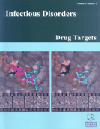
Full text loading...
We use cookies to track usage and preferences.I Understand
It is a known fact that HIV infection remains a serious public health problem throughout the world, and the need to constantly develop new antiretroviral drugs to combat HIV emerges from the fact that repetitive mutations occurring in viral enzymes make this virus resistant to antiretroviral drugs. This resistance causes failure of treatment, and hence, for many years, extensive research has been to discover newer possibilities for fighting this disease at a molecular level, along with many long-standing and expensive clinical trials. Many scientific research programs have either been discarded or unsuccessful. However, the research has not stopped, and in the process, many heterocyclic scaffolds have been used to build up novel drug molecules to combat this disease. A literature survey reveals that many heterocycles have been explored and were found to be very useful in treating different types of viral infections. This concise and rigorous literature explains the journey and highlights the various strategies to develop new anti-HIV drug candidates.

Article metrics loading...

Full text loading...
References


Data & Media loading...

